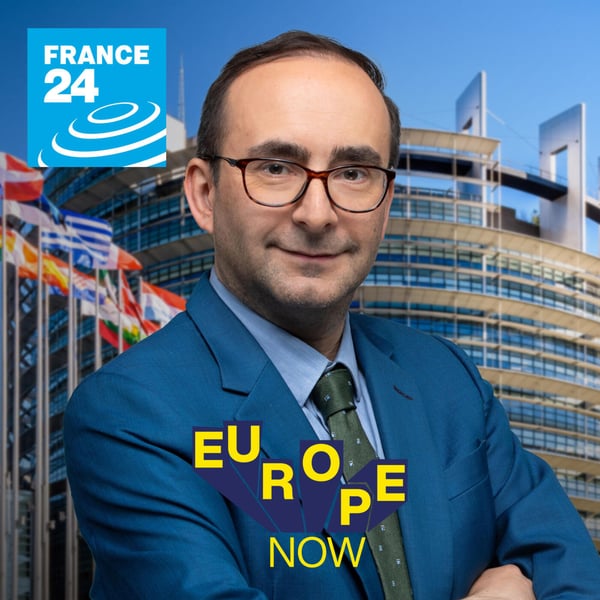Fighting poverty across the EU - one of the bloc’s top priorities (part 2)
Europe Rendezvous
France Médias Monde
2.2 • 5 Ratings
🗓️ 2 June 2023
⏱️ 18 minutes
🧾️ Download transcript
Summary
How does the European Union use cohesion funds to reduce poverty and inequality across the bloc? Our first stops are in two of the EU’s poorest countries, Bulgaria and Romania, to look at the role that EU aid plays in the areas of education and public transport. We also visit one of Europe’s richest countries - France - to see how the European Union can help to level up parts of the EU that display some surprising inequalities.
Our guests are experts on just how valuable EU funds are for Bulgaria. Bulgaria’s Minister in charge of EU funds, Atanas Pekanov, University Professor of European Affairs, Ingrid Shikova and Representative of the European Commission in Sofia, Cvetan Kyulanov.
In Romania, Luke Brown looks at efforts to reduce exclusion for the Roma community. Education has been a key vector since Romania joined the EU in 2007 - but many within the community remain frustrated by the lack of progress.
In France, Sophie Samaille and Luke Brown visit one of the regions most affected by de-industrialisation in the north of the country. Faced with a growing cost of living crisis due to inflation, food banks are a first port of call for many - and they rely on EU contributions. We also meet a dynamic mayor of the small town of Anor - badly hit by factory closures - who has battled for his community to receive EU funds to renovate the old industrial area.
Show presented by Armen Georgian, produced by Johan Bodin, filmed on location by Johan Bodin and Stéphane Bodenne, with Luke Brown. Editor in chief, Caroline de Camaret.
Co-funded by the European Union. Views and opinions expressed are however those of the author(s) only and do not necessarily reflect those of the European Union or the DG Regional and Urban Policy. Neither the European Union nor the DG Regional and Urban Policy can be held responsible for them.
Transcript
Click on a timestamp to play from that location
| 0:00.0 | I'm going to be Hello and welcome back to Europe now. |
| 0:29.6 | In this part of the show we're going to take a slightly more horizontal view of levelling up in Bulgaria, Romania and in northern France. |
| 0:38.4 | But first, let's stay a bit longer in Bulgaria. |
| 0:41.3 | Here, EU cohesion funding has been approved for a six-year period up until 27, |
| 0:47.1 | and the EU's post-COVID recovery fund is being described as a golden opportunity for this |
| 0:53.0 | country to modernize and reform. |
| 1:04.0 | I'm at the Technology and Innovation Park in Sofia, |
| 1:07.8 | which is symbolic of the kind of modernization that the European Union is encouraging. |
| 1:13.3 | And we're going to talk a bit more about EU funds in Bulgaria with Professor Ingrid Shikovar, |
| 1:18.4 | who teaches European studies at the University of Sofia. |
| 1:21.7 | Thank you so much for being our guest on the program. Nice to meet you. |
| 1:24.2 | Nice to meet you. So what is this tech park? Tell us a bit about this. |
| 1:28.3 | Frankie said I like very much this place because as you see, these were old military barracks. |
| 1:36.3 | This building there, for example. |
| 1:38.3 | Yes. |
| 1:39.3 | Some of other buildings were transformed in modern technological park |
| 1:45.0 | for young people, for young researcher, |
| 1:48.0 | for young entrepreneurs. |
| 1:51.0 | If you take a bird's eye view of European funds in Bulgaria |
| 1:55.0 | over these last 16 years, what do you think has been achieved |
| 1:59.0 | or any particular failures? |
| 2:04.5 | The membership of Bulgaria and the European Union was really a historical event for Bulgaria during this period. |
... |
Please login to see the full transcript.
Disclaimer: The podcast and artwork embedded on this page are from France Médias Monde, and are the property of its owner and not affiliated with or endorsed by Tapesearch.
Generated transcripts are the property of France Médias Monde and are distributed freely under the Fair Use doctrine. Transcripts generated by Tapesearch are not guaranteed to be accurate.
Copyright © Tapesearch 2025.

